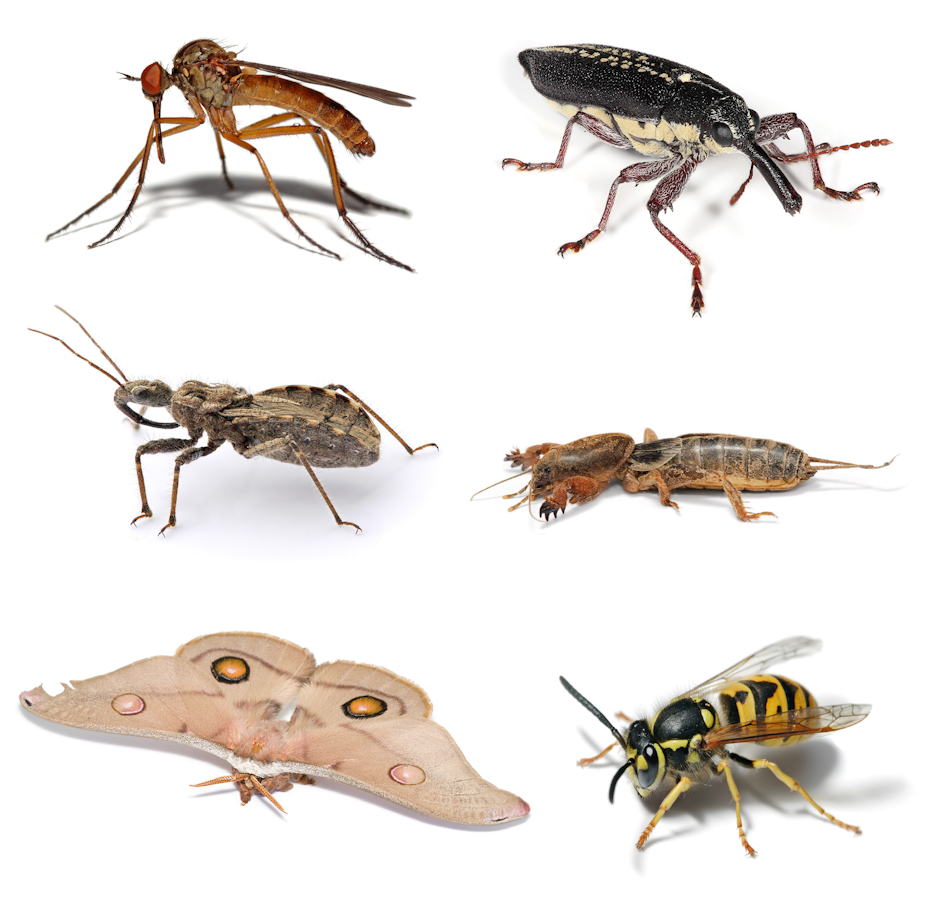I recently wrote about how important it is to be able to identify plants and animals. Knowing the names of species that live around us helps us to connect to nature.
Yes, you can enjoy greenery and birdsong without knowing which species are involved, but recognising the call of a magpie while walking under a lemon-scented gum can enrich your experience. It makes nature more personal and accessible.
The most diverse and common group of animals in your neighbourhood (and mine) are the insects. Children are often drawn to these mini-beasts and are too often warned away by well-meaning adults who are afraid they might get stung.
The fact is that knowing your insects is a gateway to developing a relationship with the natural world. Who has not marvelled at a trail of ants carrying crumbs, enjoyed the sound of cicadas on a hot summer day, or watched bees pollinate flowers?
Insects are found everywhere and are incredibly diverse. They are critical to the health of any ecosystem, including your backyard or garden. Knowing enough to tell the main groups apart is a great way to learn about animals.
Insect swarm at my place
We had an interesting experience in our garden last week. Several wattle birds were swooping overhead and then half a dozen magpies arrived and started pecking at the grass at our feet. This was unusual behaviour so we watched closely and eventually noticed a swarm of insects above the vegetable patch.
There were both small and large insects in the swarm and I guessed that the large ones were predators, enjoying the feast along with the birds, but I was wrong. After finding the sweep net and collecting a few we realised that we were looking at a termite mating swarm. The larger insects were the females, and every now and then pairs dropped to the grass to do the deed.
Many people when they hear this story will cringe at the implications of having termites near the house, but most termite species do not eat wood and are not a danger to infrastructure. We placed a few dozen into a mesh enclosure along with some water, newspaper, wood and a jar of soil. The next day they had all burrowed into the soil, so we think they hatched out of our garden compost.
How did I know they were termites? Because termites belong to the order Isoptera, which literally means “same wings”. Unlike most insects, their four wings are all the same size and shape. Once you know this it is easy to distinguish between them and winged ants (who have four wings of different sizes) or flies (who have only two wings). A little bit of knowledge is a powerful thing.
Learning more about bugs
How will you learn to identify insects? A new book called Miniature Lives: identifying insects in your home and garden, by Michelle Gleeson would be a good start. It was mentioned on the CSIRO blog just a few days ago.
If you look around, you may find activities like Bring Ya Bug Along, which will be run by a friend of mine in our home town in a few weeks.
Of course, not every bug will be a bug. This sounds odd but there is an order of insects known as “true bugs” (Hemiptera). They have sucking mouthparts which they use to pierce plants or prey. So even the word “bug” has some linguistic problems and how you use it depends on who you are talking to.
Beetles are the most common insect order (Coleoptera), and most people can recognise them from the hard wing covers. Probably the most popular insect order is the Lepidoptera (moths and butterflies). Yes, they are beautiful but their caterpillars can be bad for the garden.
Lacewings (order Neuroptera) are also beautiful in their adult form. As juveniles they are called ant-lions, which are fearsome little predators that eat garden pests. You can even buy lacewings eggs from Bunnings to add to the garden.
I could go on but if I have sparked your interest, just buy a book or go online to start learning. Using insects as a gateway to connect with nature is something everyone can do.

